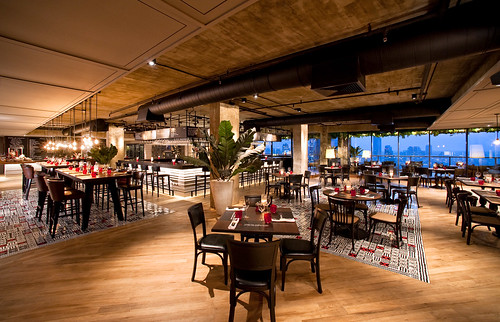Guest blogger John Borthwick goes in search of a very rare Thai destination, a car-free zone, and finds it on a time-warp Bangkok island.
Bangkok and bicycling. The two words go together nicely — much as “Russian” and “roulette” do. But the combination can be done, even survived, although not recommended down Sukhumvit Road.
With a little peloton of five other riders I’m heading to Koh Kret, an island in the Chao Phraya River some 20 km north of Bangkok’s neutron accelerator CBD. Moh, our guide on this easy, one-day ride, first drives us to a pier beside the restless river, where we wheel our bikes onto a little ferry.
Minutes later we step ashore on river-moated, time-warp Koh Kret. The island is that very rare Thai thing, a car-free zone. In 1722 Koh Kret became a refuge to Mon tribes who have lived here ever since, retaining their distinct identity and producing renowned terracotta and earthenware pottery.
Some 1500 Mon now live on the island in seven scattered villages. Their potteries produce works in kwan raman, an unglazed red-black clay. Moh leads us to a family pottery-gallery where we watch a sculptor carve a highly complex Ramayana mythological scene onto a large earthenware pot. He tells us it will take at least two weeks to finish the work, after which the pot might easily crack when fired in the kiln. He sighs, “If that happens I stare at the sky for two hours, then start again.”
We are here mid-week and the island’s narrow paths are less crowded than on the very busy weekends. We cruise along concrete causeways built above the tidal flats, with jungle to the left, hamlets to the right and mangroves all around.
Our next stop is a typical pottery factory where everything is done by hand — I am astonished by the uniformity of the pots and the pace at which the workers, paid per vessel, are producing them.
My fellow cyclists are shoppers and soon their backpacks are heavy with bowls, ornamental platters and Buddhas. Weaving past Mon houses, paddies, orchards and galleries, we reach the northernmost tip of the little island. The temperature today is wok-hot, so we take a breather here beside a small pagoda on the point that thrusts into the Chao Phraya’s current, splitting it like a ship’s prow.
The ancient pagoda, marzipanned with decades of whitewash, sags precariously towards the river like a chocolate melting in the sun. I know how it feels. We rehydrate and revive, then saddle up again to plunge back into this timeless, two-wheeled island. Lacking cars, bars, taxis, malls and tuk-tuks, Koh Kret feels like Bangkok’s version of Brigadoon.












